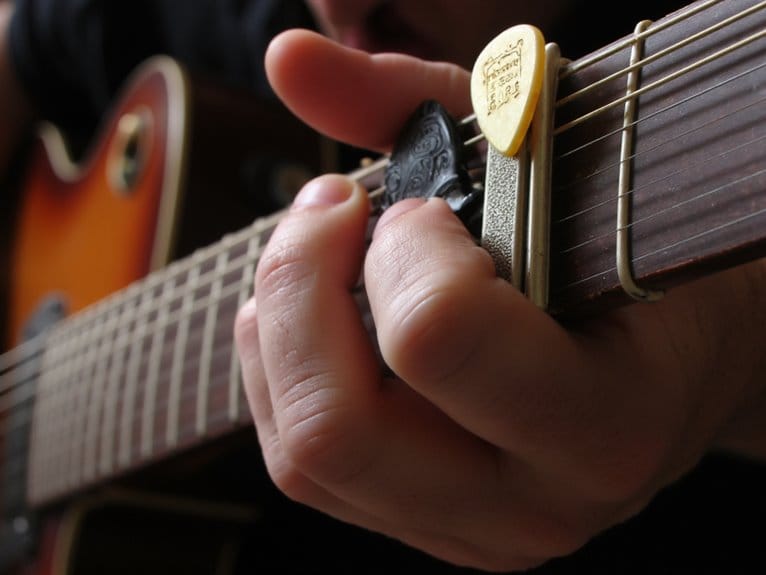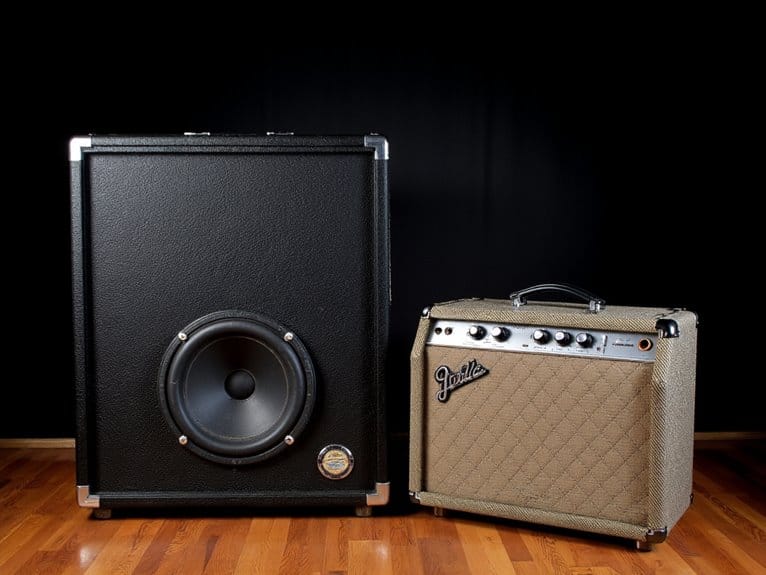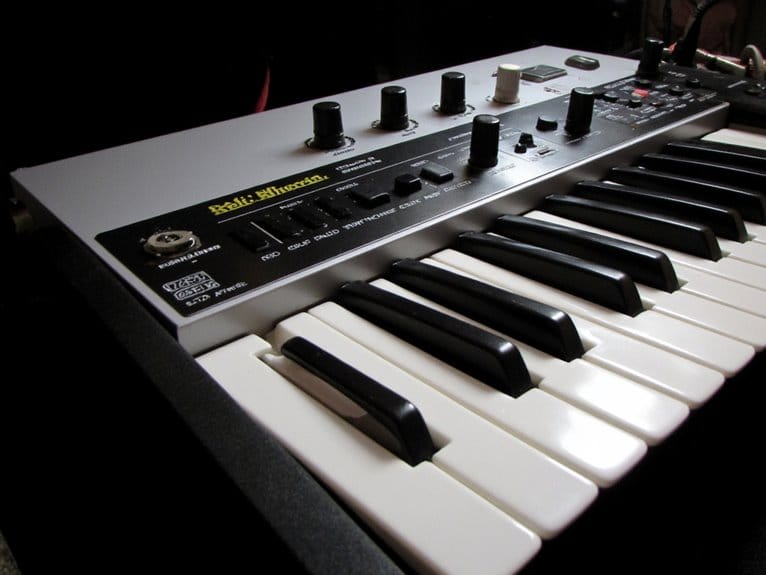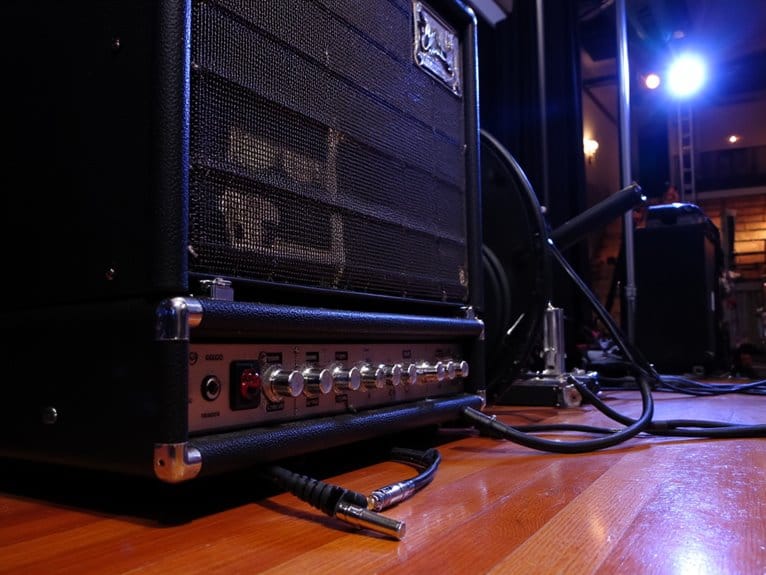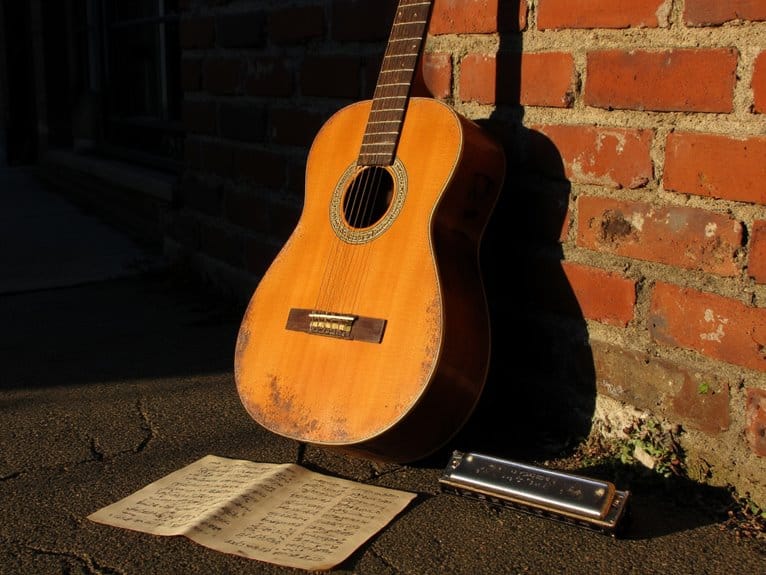Understanding Pick Techniques and Their Tonal Effects
Your pick technique dramatically alters your guitar’s voice through variations in attack intensity, angle, and timing. Heavy attacks produce grittier tones with complex harmonics, while lighter touches yield cleaner sounds with enhanced clarity. Alternative picking establishes foundational speed, hybrid picking combines flatpicking with fingerpicking for tonal variety, and economy picking maximizes efficiency during changes. Muted and slap picking create percussive textures, while dynamic manipulation shapes midrange frequencies and overtone content across genres. Mastering these fundamentals opens entirely new expressive possibilities.
We are supported by our audience. When you purchase through links on our site, we may earn an affiliate commission, at no extra cost for you. Learn more.
Notable Insights
- Alternative and hybrid picking methods establish foundational speed while providing enhanced tonal variety and textural complexity.
- Pick attack intensity directly controls harmonic content, with heavy attacks producing grittier tones and lighter touches yielding cleaner sounds.
- Muted and slap picking techniques create percussive textures that add rhythmic dimension and drum-like accents to guitar performance.
- Dynamic manipulation through varying picking strength and angle significantly alters the guitar’s midrange frequencies and overtone characteristics.
- Genre-specific picking styles like gypsy jazz rest strokes and country alternating bass reflect cultural heritage while shaping distinctive tonal signatures.
Fundamental Guitar Picking Methods and Their Applications
While I’ve spent countless hours perfecting various guitar techniques over the years, I can confidently say that mastering fundamental picking methods forms the backbone of virtually every guitarist’s technical arsenal, regardless of whether you’re drawn to blistering metal solos, intricate jazz progressions, or driving punk rhythms.
Alternative picking establishes your foundational speed and fluency through consistent down-up motions, building the synchronized hand independence that’ll serve you across every genre imaginable.
Mastering consistent down-up picking motions builds the hand independence essential for developing speed and fluency across all musical styles.
Meanwhile, hybrid picking opens entirely new sonic territories by combining flatpicking with fingerpicking, allowing you to pluck multiple strings simultaneously for enhanced tonal variety.
These core techniques, though admittedly challenging to master initially, provide the essential framework upon which all advanced picking methods build, making them absolutely vital for your long-term development. Just as MIDI keyboards offer essential functionality for music production without compromising quality, these fundamental picking techniques serve as your entry point to advanced guitar performance. When recording or performing these techniques, compact digital mixers can capture the nuanced tonal differences with professional-grade preamps that preserve the subtle variations between picking styles. Economy picking represents an evolution of these fundamentals by combining alternate picking with sweep picking to maximize efficiency during string transitions. For players seeking even greater precision and control, circular picking involves moving the pick in small circles to achieve enhanced accuracy during complex passages.
Percussive and Textural Sound Creation Techniques
Beyond mastering conventional picking fundamentals, I’ve discovered that guitar’s true expressive potential emerges when you start treating your instrument as both a melodic and rhythmic device, employing percussive techniques that transform simple string strikes into complex textural landscapes.
Muted picking creates rhythmic texture through palm dampening, while string tapping with your pick edge generates drum-like percussive effects that punctuate melodic lines. I’ve found that manipulating attack dynamics—varying your picking strength and angle—dramatically alters textural perception, especially when combined with effects processing.
| Technique | Sound Character | Best Application |
|---|---|---|
| Palm Muting | Tight, percussive | Rhythmic foundation |
| Slap Picking | Snapping, drum-like | Accent emphasis |
| Hybrid Picking | Complex layered | Ambient layers |
Creating ambient layers requires lighter attack combined with delay effects, building atmospheric soundscapes that evolve organically beneath your primary melodic content. Understanding how pitch registers affect the density and character of your overall texture helps you craft more intentional and musically meaningful arrangements.
Tonal Characteristics and Musical Expression Through Pick Attack
Since discovering how dramatically pick attack transforms your guitar’s voice, I’ve come to view this technique as one of the most underutilized tools in a guitarist’s expressive arsenal, capable of reshaping tone and character without touching a single control knob.
Your pick intensity directly controls harmonic content, with heavy attacks producing grittier, more distorted tones while lighter touches yield cleaner sounds. This fundamental relationship between force and harmonic complexity becomes especially valuable in high-distortion contexts, where aggressive picking cuts through dense mixes without creating muddiness.
Mastering these tonal dynamics allows you to craft seamless expressive variations within solos, controlling sustain and note definition while shaping midrange frequencies and overtone content that defines your musical voice.
Genre-Specific Picking Styles and Their Cultural Context
Throughout my years studying guitar techniques across different musical traditions, I’ve discovered that each genre’s picking style reflects far more than mere technical preferences—these approaches encode centuries of cultural identity, historical migration patterns, and social storytelling methods that shaped entire musical landscapes.
When you explore clawhammer picking, you’re connecting with Appalachian and African traditions that prioritize storytelling through rhythm. This contrasts sharply with classical techniques that demand finger independence for European harmonic complexity. Meanwhile, gypsy jazz combines economy picking with rest strokes, reflecting Romani cultural heritage and pre-electric acoustic projection needs.
| Style | Cultural Heritage | Primary Technique | Key Artists |
|---|---|---|---|
| Clawhammer | Appalachian/African | Downward pluck | Doc Watson |
| Classical | European | Finger independence | Traditional masters |
| Gypsy Jazz | Romani | Rest strokes | Django Reinhardt |
| Country | American | Alternating bass | Chet Atkins |
Technical Mastery and Progressive Skill Development
While the cultural foundations of picking provide essential context, developing technical mastery requires a systematic approach that transforms these traditional methods into personal expression through deliberate practice and progressive skill building.
You’ll need to start with foundational exercises using a metronome, typically beginning around 50 BPM and gradually increasing to 160 BPM or beyond.
Progressive exercises focusing on alternate picking patterns will embed muscle memory through consistent repetition, though you’ll want to address any bad habits early since they’re harder to correct later.
I’ve found that integrating rest strokes reduces excessive movement while combining downstrokes with varied string shifts retrains your hand naturally.
Strategic use of pull-offs and hammer-ons creates seamless transitions that accommodate increasing technical complexity. Just as audio mixers require cross-platform compatibility to work seamlessly with different recording setups, your picking technique must adapt fluidly across various musical contexts and equipment configurations.
Similar to how brass instruments benefit from tailored frequency response that captures their specific tonal characteristics, guitarists must develop picking techniques that are precisely calibrated to extract the desired sound from their instrument’s unique frequency range.
Consistent practice with quality guitar picks will enhance your technique development and ensure optimal tone production during these foundational exercises.
Frequently Asked Questions
What Pick Materials and Thicknesses Work Best for Different Picking Techniques?
You’ll want thin nylon picks for strumming, medium acetal for versatility, and heavy Ultem for lead work. Pick materials and thickness preferences directly impact your tone—thicker picks give warmer sounds while stiffer materials provide better control.
How Do I Prevent Hand Fatigue When Practicing Intensive Picking Techniques?
You’ll prevent hand fatigue by maintaining proper hand posture with relaxed wrists and shoulders. Start sessions with warm up exercises, take regular breaks, use minimal pressure when fretting, and gradually build endurance through consistent practice.
Can I Effectively Combine Multiple Picking Techniques Within a Single Song?
You can absolutely combine multiple picking techniques effectively within one song. Smart song arrangement allows you to shift between alternate, hybrid, and sweep picking to create dynamic contrast and richer textures throughout different sections.
On a final note
You’ve now explored the fundamental relationship between pick technique and tonal expression, from basic attack angles to genre-specific applications. I’ve found that mastering these various approaches, whether you’re developing percussive palm-muting for metal or perfecting hybrid picking for country, requires consistent practice and careful attention to the subtle differences in attack dynamics. Your journey toward technical proficiency will ultimately enhance your musical voice and creative expression.

